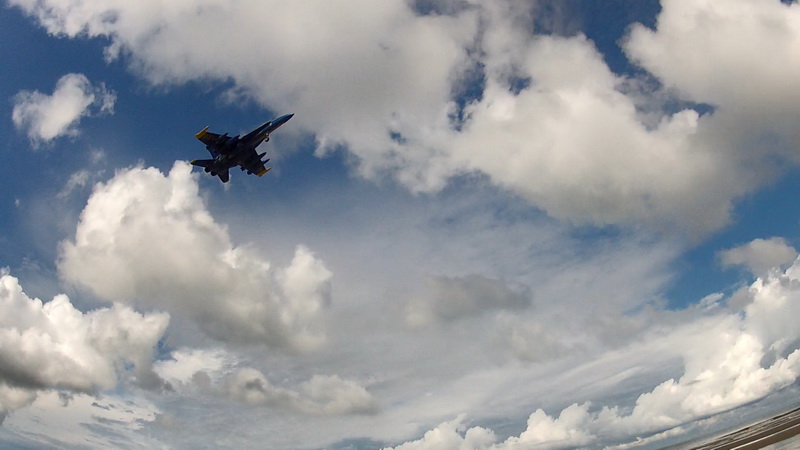
About
Few years back around 2014 my R/C enthusiast uncle used to have this 64mm EDF size 'FMS F-18 HORNET' with 'Blue Angel' livery that caught my interest. Back then i was very deep over my interest with my two jets the HOBBY KING aka  ART-TECH F/A-18 HORNET with Jolly Roger like grey/black marking livery. I always flew them everyday before and after working hours with fellow R/C members at the field. I'm thrilled and amazed how this jet flies, floats well and ability to performed high G-force like maneuver that always keep all my full 100% attention on the stick control. Every flights with these planes always makes me smile all the way to bed time. Of course if you did something cool in the air those memories will keep you awe of fascination forever...that's what makes R/C flying very addictive! R/C pilot rulez! Upon seeing the my uncle's 'Blue Angel' version i made a deal with him and we did some hefty barter trade with my other unused planes in my hangar. My goal back then to get as much EDF plane into my collections. I need more jet planes in my hangar and being cheap at the same time! lol! hehehehe! ......the fact was that i don't want to wait 30 days shipping when something i want is already in front of me. FYI decades ago between 2001 to 2010 parcel delivery services was a 'slow boat from china'...30 days was a norm. Now in 2022 waiting 7 days was max, plus with price inflation that's insane ....btw 'Consumerism wins!' irony.
ART-TECH F/A-18 HORNET with Jolly Roger like grey/black marking livery. I always flew them everyday before and after working hours with fellow R/C members at the field. I'm thrilled and amazed how this jet flies, floats well and ability to performed high G-force like maneuver that always keep all my full 100% attention on the stick control. Every flights with these planes always makes me smile all the way to bed time. Of course if you did something cool in the air those memories will keep you awe of fascination forever...that's what makes R/C flying very addictive! R/C pilot rulez! Upon seeing the my uncle's 'Blue Angel' version i made a deal with him and we did some hefty barter trade with my other unused planes in my hangar. My goal back then to get as much EDF plane into my collections. I need more jet planes in my hangar and being cheap at the same time! lol! hehehehe! ......the fact was that i don't want to wait 30 days shipping when something i want is already in front of me. FYI decades ago between 2001 to 2010 parcel delivery services was a 'slow boat from china'...30 days was a norm. Now in 2022 waiting 7 days was max, plus with price inflation that's insane ....btw 'Consumerism wins!' irony.
Already in my hands i'm surprised to see both the FMS and the Hobby King's Hornet jet are almost similar in size both fuselage and wingspan length but with the exception that the FMS version is a bit heavier and made from durable yet elastic EPO foam while the HK version was lighter made from EPS. Both also used the same 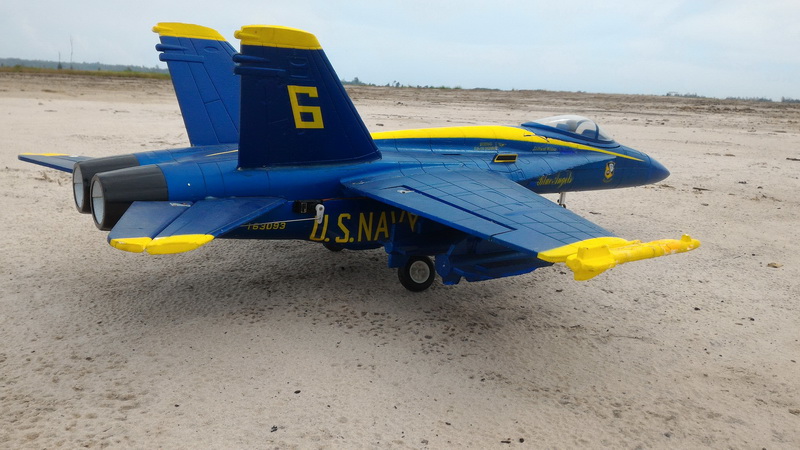 3s 2200mah 35~40C li-po battery and requires the same 4CH radio requirements. When it come to overall appearance the 'Blue Angel' is a looker with extra payload such as drop tanks and rockets making it aesthetically more scale in looks and stylish in the air especially having a striking dark blue and yellow color 'Blue Angel' livery. On the day of the my maiden flight i finally realized that my old EPS foamie HK F-18 sucks very hard both performance and agility thus a loser jet in comparison to later ones....... its obvious the FMS F-18 Hornet has much powerful thrust than HK making flying more adrenaline tense and fun since its now capable to do many solid aerobatics without feeling under power or stalled in high 'angle of attack' (AOA). Now in year 2022 this jet plane still living well without major problem, it the only EDF jet i've flown more frequent than other model in my hangar. Every flight it took has been very full filling to my heart content. I can say it was the best ever R/C jet model i got via trade with my uncle and over time it has became a rare gem since the production of such livery no longer around in the market....lucky me! As for my old HK(Art-Tech) F-18 in 2022 both just bites the dust and hanged on the wall seeing retirement coming close by......EPS foam started to rot though and cracked really bad. On the other hand FMS F-18 rocks!
3s 2200mah 35~40C li-po battery and requires the same 4CH radio requirements. When it come to overall appearance the 'Blue Angel' is a looker with extra payload such as drop tanks and rockets making it aesthetically more scale in looks and stylish in the air especially having a striking dark blue and yellow color 'Blue Angel' livery. On the day of the my maiden flight i finally realized that my old EPS foamie HK F-18 sucks very hard both performance and agility thus a loser jet in comparison to later ones....... its obvious the FMS F-18 Hornet has much powerful thrust than HK making flying more adrenaline tense and fun since its now capable to do many solid aerobatics without feeling under power or stalled in high 'angle of attack' (AOA). Now in year 2022 this jet plane still living well without major problem, it the only EDF jet i've flown more frequent than other model in my hangar. Every flight it took has been very full filling to my heart content. I can say it was the best ever R/C jet model i got via trade with my uncle and over time it has became a rare gem since the production of such livery no longer around in the market....lucky me! As for my old HK(Art-Tech) F-18 in 2022 both just bites the dust and hanged on the wall seeing retirement coming close by......EPS foam started to rot though and cracked really bad. On the other hand FMS F-18 rocks!
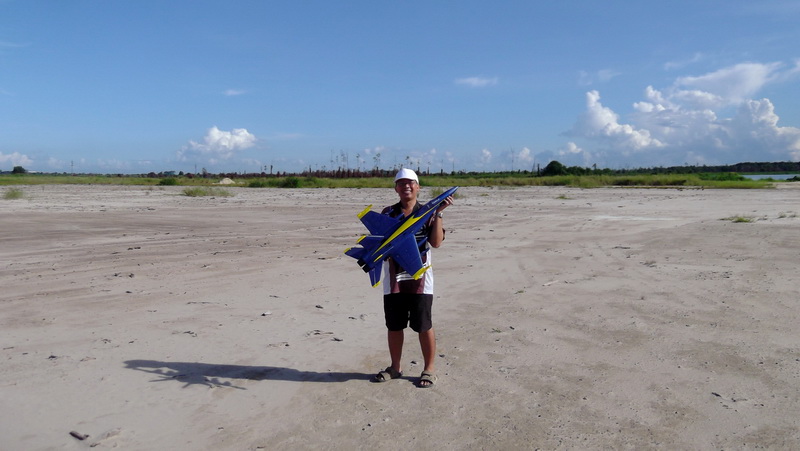
Specification (as describe by vendor/manufacturer)
Brand name: FMS
Model name: F/A-18 HORNET V1 (BLUE ANGEL livery)
Release date: Unknown (But i received in 2014)
Wing loading: 81.3 g/dm² (0.19 oz/in²)
Wing Area: 12.3 dm² (190.7 sq.in)
Center Gravity point: 7.5cm from the root front leading edge of main wings. (with 3s 2200mah 30~45 Li-po battery)
Ideal battery pack: 11.1v 3s 2200mah 30~40C Li-po battery (Not Included)
Average flight time (normal cruise flight): 4~5 minutes
Fuselage + wing material build: EPO foam (Expanded Polyolefin)
Includes:
+ Full photo manual
Requires:
- Your own 4 Channel TX/RX radio unit
- 11.1v 3s 2200mah at 35C~40C Li-po battery
Flight level/piloting experience requirement:
+ Piloting level: Intermediate to Advanced
+ Minimum past model experience: Flown any simple glider or any 4 channel beginners planes.
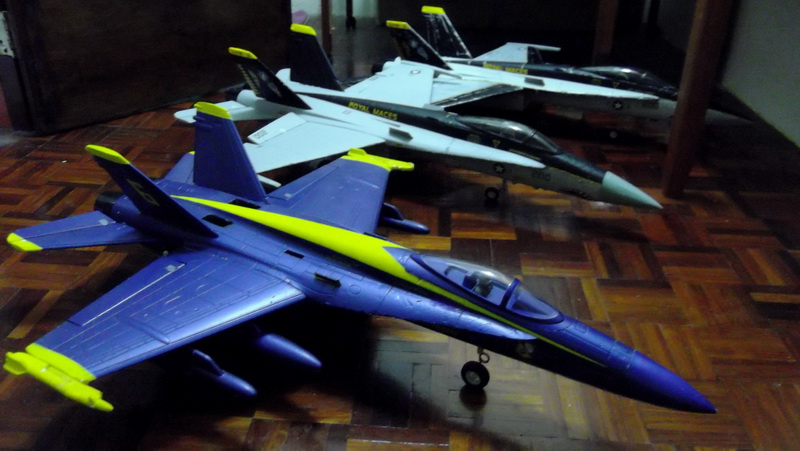
|
Pros:
|
Cons:
|
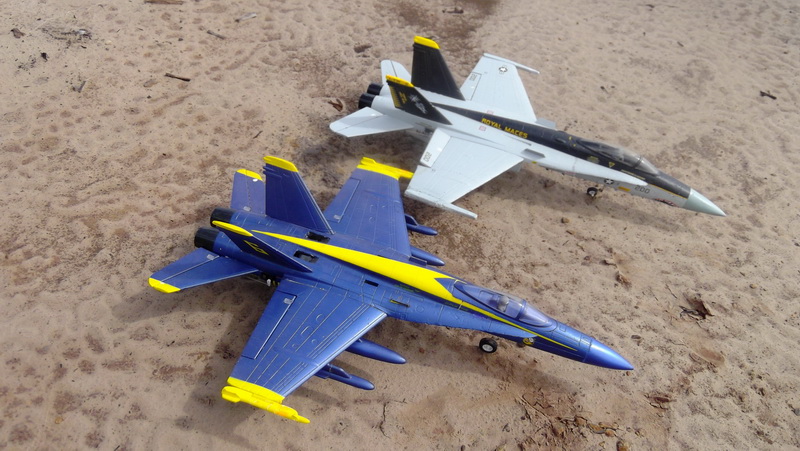
Quality and builds
I can't comment how the FMS F-18 Hornet kit looked like from in and out of box because i got it in full assembled form from uncle whom i did barter trade for with my R/C models to get his plane. My uncle informed in stock form (Version 1 model) its severely under powered, lack of thrust which means takes longer to take-off from the ground. Evidently as i research online via community 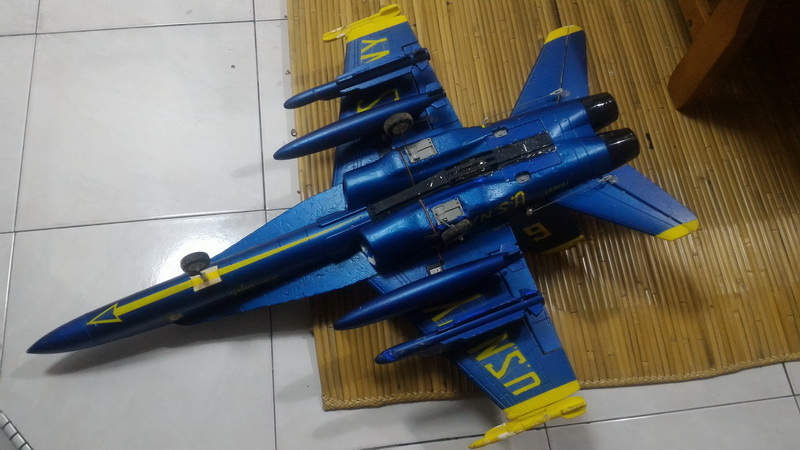 forum the owner does have issues with it. Because of this issues my uncle did some improvements by upgrading motor and DIY some extra air intake. So what i got is an upgraded EDF unit to TYPHOON brushless motor and DIY mods 2x 'Cheater Holes' air inlet above the fuselage which improve air intake for increase of approximately 1kg of thrust.
forum the owner does have issues with it. Because of this issues my uncle did some improvements by upgrading motor and DIY some extra air intake. So what i got is an upgraded EDF unit to TYPHOON brushless motor and DIY mods 2x 'Cheater Holes' air inlet above the fuselage which improve air intake for increase of approximately 1kg of thrust.
The FMS F-18 Hornet is more robust and structurally solid than my old HOBBY KING aka ART-TECH F/A-18 HORNET (Jolly Roger livery). Both Hornets have almost the similar fuselage size and wingspan but FMS are made from elastic yet durable EPO foam material yet slightly heavy while the Hobby King are made from lightweight EPS foam but fragile at the same time. The landing gear on FMS version be able to take some moderate impact and harsh landing due to its solid steel laced struts the under carriage while the HK version was quite thin, flexy and will likely bent easily and crush the EPS foam place holder that slotted the landing gear in place. Both planes have the same flight mechanism to move the flight control surfaces via long steel push rods but the FMS have beefier steel servo push rods while the HK version are thin and bent easily from elevator stress loads which is why i reinforced it using carbon rods to wrapped along the rods to strengthen it.
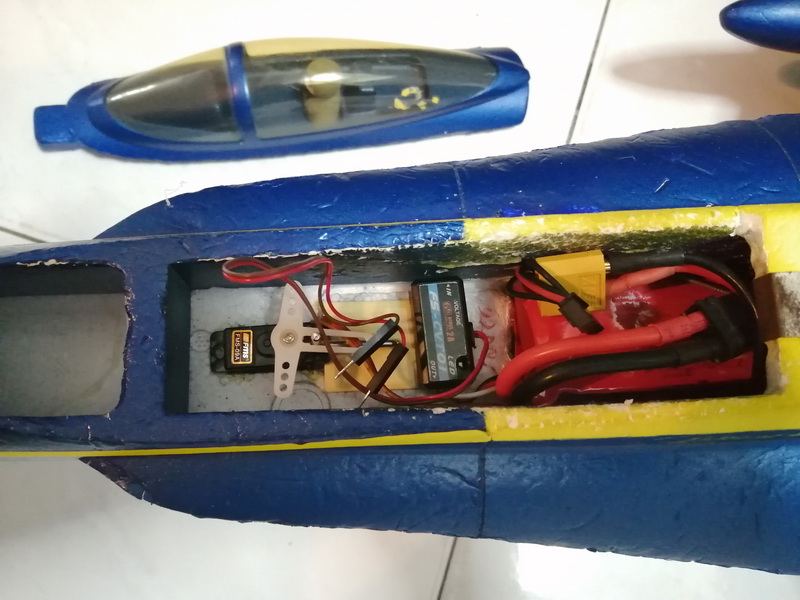
This plane uses 3s 2200mah between 35~40C rating li-po battery which is generically used on all my flight R/C models fits perfectly inside the F-18 Hornet fuselage cavity exactly on the battery compartment just behind the front steerable landing gear servo without much adjustment to get the CG right. As for Center Gravity (CG) the placement is at around 7.5cm from the root front leading edge of main wings.
*Do take note the 'Version 2' of FMS releases on F-18 HORNET run on much heavier 4S li-po battery which result a varied CG placement than my 'Version 1' model.
This EDF plane runs on basic 4CH radio control which control 5x servo as follows:
- 2x servo for aileron via 'Y' servo cable connection.
- 2x servo for elevator via 'Y' servo cable connection.
- 1x for steering wheel via rudder channel for steering the plane on the ground. However it doesn't have actual rudder on in the air flight control surface.
As mentioned above its obvious the flight control setup is build to fly without 'Rudder' control in the air so there's no YAW to turn the plane to either left or right. The flight characteristic is more like 'Bank & Yank' to turn or yaw the plane around because for a fast small jet plane its obvious flying with rudder have minimal effect on overall maneuver. These also applies the same to my old HK F-18 jets. So to summarize a complete flight movement; move the 'aileron' to bank then pull the 'Elevator' to start yaw/turning.
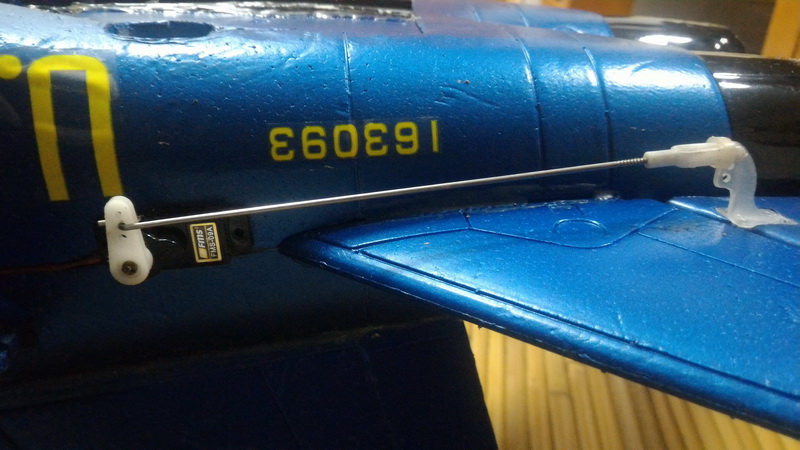
Necessary DIY improvement
The Version 1 of this F-18 Hornet by FMS originally was under powered jet with stock EDF motor which makes makes it hard to take off from the ground and mild speed and dips a lot when yaw during the flights. Communities of EDF jet enthusiast wasn't really impressed with FMS first batch of 64mm EDF F-18 hence Version 1. This led to the the improvement of Version 2 made by FMS that have improved motor and 11x bladed EDF running on 4s li-po pack. For the Version 1 which was originally in the hands of my uncle before the hand over he did two improvement as mention below: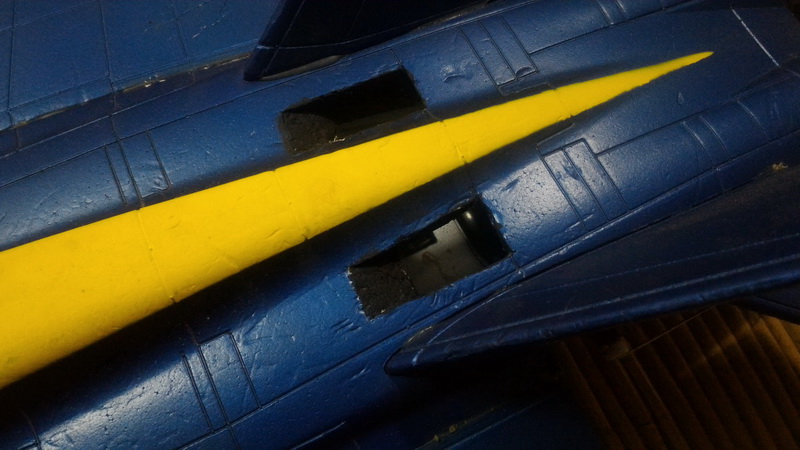
-
Upgrade motor
Have been upgraded to higher RPM/KV motor to give more thrust, in this case my uncle added EASY RC HOBBY - BLACK TORNADO KV4800 brushless motor. -
Cheater holes
A 'cheater holes' is an additional duct or extra air intakes located closer to the ducted fan (EDF unit) which easily more air going into the ducted fan unit for extra boost. Its the most efficient way to fix thrust issues especially for an EDF jet that are struggling to get adequate amount of air into ducts especially on an F-18 jet that have smaller intake for aesthetics looks.
With the above fix the Version 1 F-18 is now very lively to fly and display true jet like characteristic flight. Thrust power for the win!
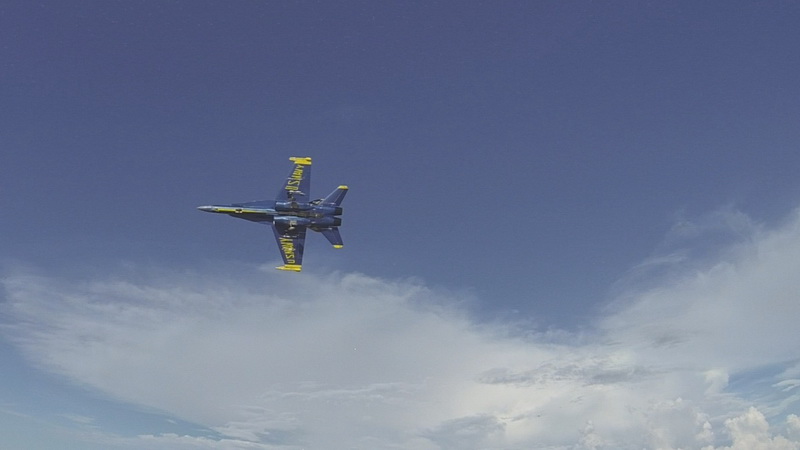
Flight performance
My first maiden day of flight was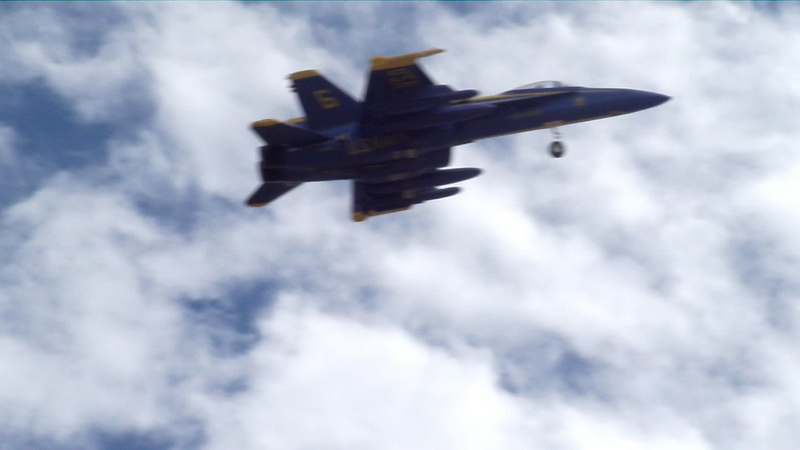 uneventful, went off well and smooth...just a elevator trim and its all good. Of course i was impressed with the torque power and it launches from the ground and into the air like a rocket. It has huge 'OOmmppphhh!' of raw power from 0 to 1 seconds of launched interval. It does however makes my old HK F-18 looks sad being slower though. For the FMS F-18 with good amount of speed at 75%~80% in the air the plane flies straight like a dart with full authority control (bank & yank) on the aileron and elevator flight surfaces. Within the first 2 minutes in the air i already quickly familiarized with its flight characteristic and straight away doing all those flight maneuver like i always do on any park flyer size EDF planes. The flight on FMS F-18 HORNET was far more predictable under my radio thumb stick; i know what to expect when cornering, vertical thrust and knows immediately where it started to lose attitude as per-throttle throw. All because it flew very similar to both my HK A-10 Warthog and HK F-18 Hornet but with extra power!. I was like "oh! i got this...let go!". So if any trees jumping in front of FMS F-18 it's very easy to dodge and fly around it thanks to its fast responsive flight control...hahaha!
uneventful, went off well and smooth...just a elevator trim and its all good. Of course i was impressed with the torque power and it launches from the ground and into the air like a rocket. It has huge 'OOmmppphhh!' of raw power from 0 to 1 seconds of launched interval. It does however makes my old HK F-18 looks sad being slower though. For the FMS F-18 with good amount of speed at 75%~80% in the air the plane flies straight like a dart with full authority control (bank & yank) on the aileron and elevator flight surfaces. Within the first 2 minutes in the air i already quickly familiarized with its flight characteristic and straight away doing all those flight maneuver like i always do on any park flyer size EDF planes. The flight on FMS F-18 HORNET was far more predictable under my radio thumb stick; i know what to expect when cornering, vertical thrust and knows immediately where it started to lose attitude as per-throttle throw. All because it flew very similar to both my HK A-10 Warthog and HK F-18 Hornet but with extra power!. I was like "oh! i got this...let go!". So if any trees jumping in front of FMS F-18 it's very easy to dodge and fly around it thanks to its fast responsive flight control...hahaha!
On take-off operation; with the new EDF motor upgrades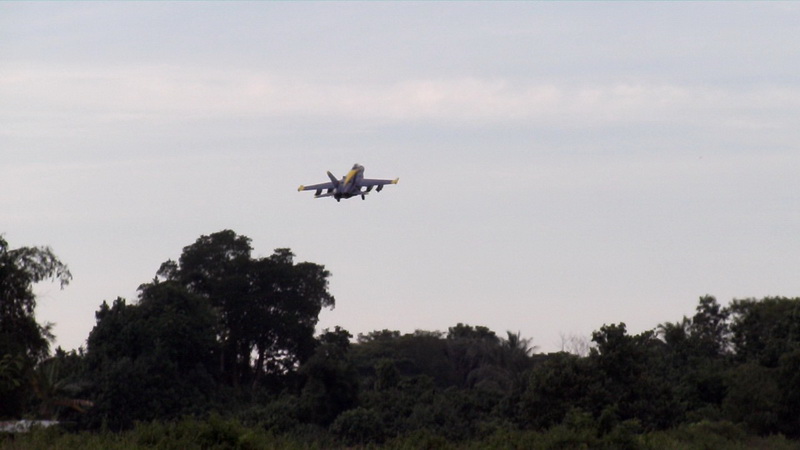 (BLACK TORNADO KV4800) its easy to do a short distance take off within minimum of 20m ~ 25m of open space runway by a park sized EDF jet standard. Normally an average 64mm to 70mm EDF duct size and with the same mass and wattage power would consume around 30m to 45m distance to do a clean take off from the ground in calm windless condition. But if it goes into the head wind this F-18 could easily take off short in just 15m runway length. My old HK F-18 Hornet also could take off close to the same distance as the FMS version despite has lower thrust ratio running on stock lower powered EDF motor because it has an advantages of having lighter EPS foamy fuselage...more like a kite than a rocket.
(BLACK TORNADO KV4800) its easy to do a short distance take off within minimum of 20m ~ 25m of open space runway by a park sized EDF jet standard. Normally an average 64mm to 70mm EDF duct size and with the same mass and wattage power would consume around 30m to 45m distance to do a clean take off from the ground in calm windless condition. But if it goes into the head wind this F-18 could easily take off short in just 15m runway length. My old HK F-18 Hornet also could take off close to the same distance as the FMS version despite has lower thrust ratio running on stock lower powered EDF motor because it has an advantages of having lighter EPS foamy fuselage...more like a kite than a rocket.
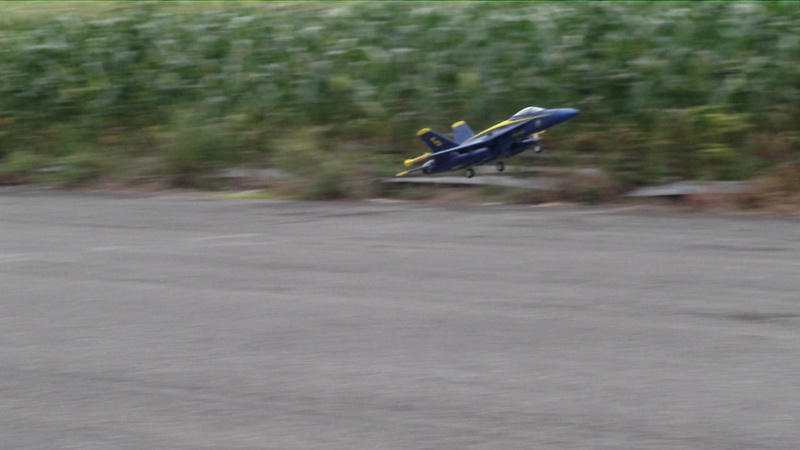
Once the FMS F-18 Hornet is in the air it flew fast, agile and remarkably far more stable in the wind when compare against my old HK aka Art-Tech F-18 Hornet of the same size and at the same time keep my thumb full alert on the radio control stick for any 'jumping trees', lol!. For the 'Blue Angel' it flew perfectly into rough turbulent winds slicing like a sharp knife, doesn't even rocked side to side when hit by cross wind either and yet able to do all my favorite simple aerobatic maneuver such as barrel roll, loops and inverted stunts. It felt like it has enough mass and inertia to fight any turbulent wind in the air and move forward confidently. Thus this flight and handling characteristic makes me more confident to push its flight  envelop further and i can easily predict what coming next when i do any 'bank & yank' maneuver extremely close to the ground. My favorite move is always the vertical thrust pushing hard on the throttle as it pointed it nose high angle towards the sky shoot up like a rocket until i feel when the speed slow down i just pull up the elevator again to complete the back flip loop. Always make me having "wow!" moments with such raw power from little 3s 2200mah li-po battery pack as if you've flying on 4s battery which is common power requirement for standard 64mm performance EDF. So this is economy jet on steroids for power on the budget. Unlike the old HK F-18 with its lightweight EPS foam it rocked and rumble a lot like a stalled kite or ship on wavy ocean when the winds get rough because its overall flight weight is lighter than FMS and felt no forward inertia.. it felt like flying a kite got thrown around but only with a strong steady throttle would keep it in solid position. Regardless i still love both FMS and HK Hornets because both seems to be of different 'animal' in the air. If i like some speed thrills and stunts i'll for FMS but if i want to do relaxed floaty flight i'll go for HK. During its lifespan from year 2014 till 2022 its the FMS F-18 that get more air time than any other EDF in my hangar while my A-10 WARTHOG is second from behind. So what happened to my HK Hornet...well the foamie getting old and brittle after too much exposure under the sun and being too long inside my hangar, plastic started to turn yellow and cracking.
envelop further and i can easily predict what coming next when i do any 'bank & yank' maneuver extremely close to the ground. My favorite move is always the vertical thrust pushing hard on the throttle as it pointed it nose high angle towards the sky shoot up like a rocket until i feel when the speed slow down i just pull up the elevator again to complete the back flip loop. Always make me having "wow!" moments with such raw power from little 3s 2200mah li-po battery pack as if you've flying on 4s battery which is common power requirement for standard 64mm performance EDF. So this is economy jet on steroids for power on the budget. Unlike the old HK F-18 with its lightweight EPS foam it rocked and rumble a lot like a stalled kite or ship on wavy ocean when the winds get rough because its overall flight weight is lighter than FMS and felt no forward inertia.. it felt like flying a kite got thrown around but only with a strong steady throttle would keep it in solid position. Regardless i still love both FMS and HK Hornets because both seems to be of different 'animal' in the air. If i like some speed thrills and stunts i'll for FMS but if i want to do relaxed floaty flight i'll go for HK. During its lifespan from year 2014 till 2022 its the FMS F-18 that get more air time than any other EDF in my hangar while my A-10 WARTHOG is second from behind. So what happened to my HK Hornet...well the foamie getting old and brittle after too much exposure under the sun and being too long inside my hangar, plastic started to turn yellow and cracking.
The 'Center Gravity' factor on FMS F-18 is a marvel feature which i witness during flight; when i flew at high speed then rocket vertically nose upwards towards the sky 90 degree up and then it started to loose thrust into a stall the F-18 started to tumble down toward the ground but the fuselage orientation 'righted up' by itself without me having to struggle adjust tha aileron roll axis to make sure it leveled with the horizon. This is because the heaviest part of the plane which contain the li-po battery in the fuselage is located far below the CG center line (which is below the wing root) and this helps to upright the plane position naturally if high thrust AOA vertical stall happens. This is what people called it a 'Pendulum Clock Effect' where gravity just pull the heaviest part of the fuselage toward the ground. So recovery from bad high altitude AOA stunts are much easier on FMS than on HK F-18. The HK F-18 does similar things to but quite a struggle to regain adequate amount of forward thrust as it started to 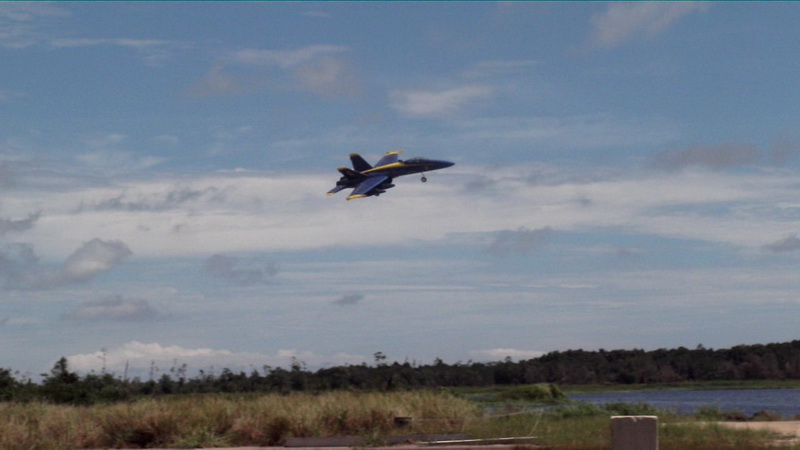 point down toward the ground and break away from stall speed. Overall both plane will never have problem with 'wing tip stall' which is a safe bet.
point down toward the ground and break away from stall speed. Overall both plane will never have problem with 'wing tip stall' which is a safe bet.
The only Cons i see on FMS was its because of its 'Blue Angel' livery...is dark blue and little yellow strips on the fuselage. As i flew distance away LOS (Line Of Sight) with the backdrop of tropical blue horizon and especially with the seaside view its very hard to see the orientation of the plane axis...i don't know which side of the wing dipping... left or right? Its really cool to fly in the sunset too since it cast harsh shadow and also being smaller in size (Park size jet). Which is why if you watched video of me flying this plane its always flown in close proximity, fly by and low passes. I been though a lot of 'visual mis-orientation' flight and the worst plane in my hangar that i've been through was the notorious F4U CORSAIR; this old WW2 by default have dark blue sea color through its entire fuselage with minor marking on its wing making its far harder to visually see when flying on clear blue tropical sky and beaches. Plus they are not easy to fly for R/C pilot with intermediate flying skills. Its the only plane in my hangar that makes my heart pounding hard and sweat stick when flying it, lol!...that was an awesome thrilling experience to fly btw.
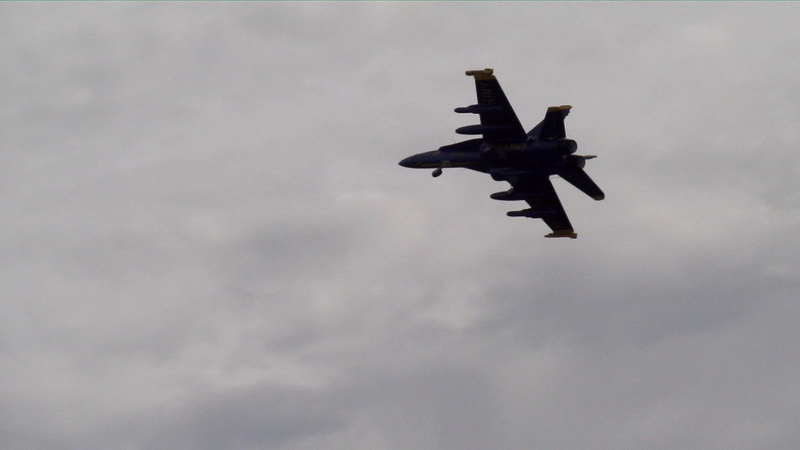
As for the radio stick controller setting this is my personal setup on old TURNIGY 9X radio. (other people setup may varies depending on CG, weight/ thrust power and servo responses):
- EXPO
- Throttle: 0%
- Aileron: 60%
- Elevator: 55%
- Rudder: 100%
- EPA
- Throttle: 100%
- Aileron: 70%
- Elevator: 100%
- Rudder: 120% (Control steering wheel only)
- TRIM
- Throttle: 0
- Aileron: 0
- Elevator: -119
- Rudder: 0
*Note: On early setup my FMS F-18 was running on decades old TURNIGY 9X radio combo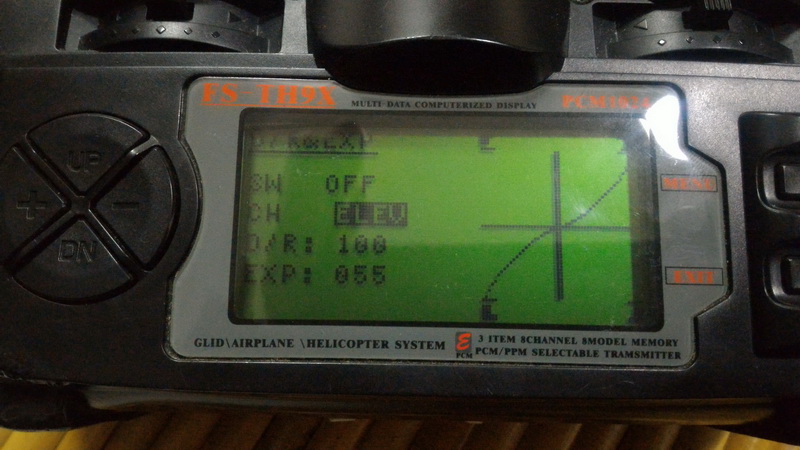 with FRSKY DJT 2.4ghz unit, but some where in 2018 i've switch to budget yet modern radio the FLYSKY FS-i6X on this plane.
with FRSKY DJT 2.4ghz unit, but some where in 2018 i've switch to budget yet modern radio the FLYSKY FS-i6X on this plane.
Running on recommended 3s 2200mah 35~40C li-po battery it has about 4 to 5 minutes of flight time with mixed of normal cruise and full vertical thrust. If i just doing some normal low pass or fly at cruise speed or trying to hover into the head wind throttling steady at 70% it could stay up in the air for max at 6 minutes before li-po battery hitting 10.3v. I can easily monitor the battery level while in the air because since i use cheap affordable FLYSKY FSi6X radio its receiver unit the FS-iA6B support telemetry and power module sensor which transmit telemetry data of battery amperage and voltage back to the radio and display status of the screen and also an audible alarm if it hits the voltage limits.
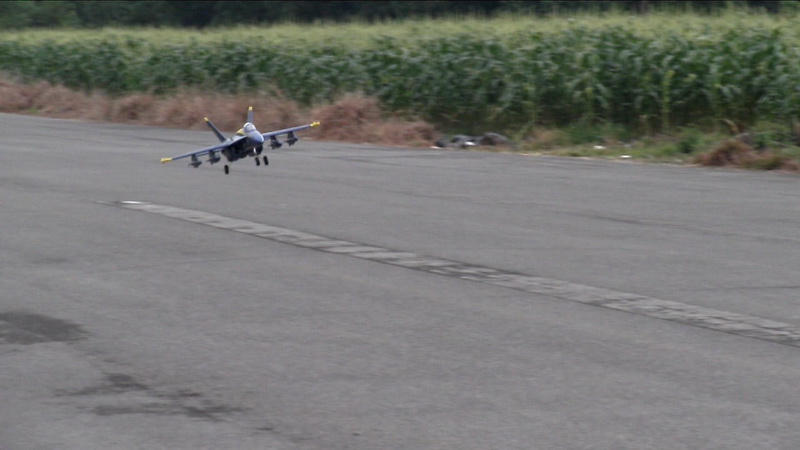
When its time to land the this FMS F-18 Hornet has the most admirable and impressive landing capability, but its all up the the R/C pilot skill to execute it. 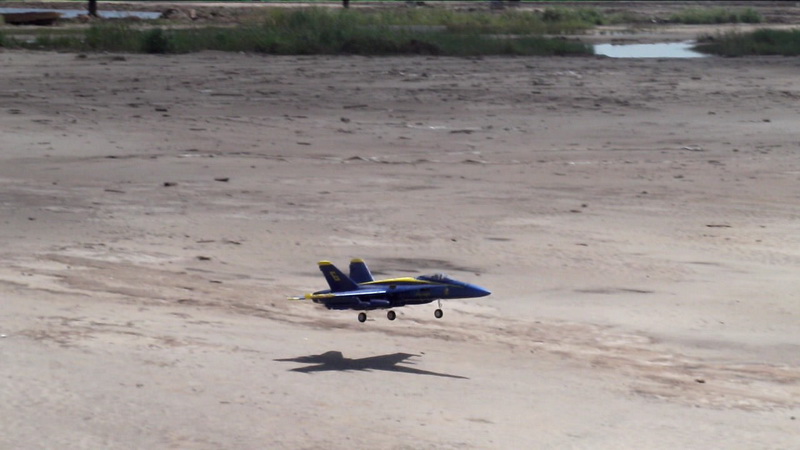 With throttle cut-off in mid air approaching glide slope going for landing this plane has lots of steady forward momentum speed without stalling to the ground. All i need is to adjust the combination aileron and elevator to yaw it into correct landing path trajectory. It approaches like a steady glider with linear rate of slowing down the speed. It can go either 'hot landing' approach or flare it like eagle spread it wings to brake it to a stop on to the ground. Under my control i could easily land it within just 10 meters of runway distance by doing last minute 'flare' by increasing the AOA (Angle Of Attack) in milliseconds before the rear landing gear hits the ground then the front steering gear while turning off the throttle and let glide in naturally the air. Its even twice easier and shorter if goes into the head wind. Regardless of wind condition, types of terrains and obstacles i always have successful 100% perfect landing on both first rolling on rear wheel first or on all three (tricycle) landing gear wheels. at the same time. It always me proud seeing it landed safely like a real F-18 Hornet landing on aircraft carrier style without any accident or crushing the landing under its own weight. From 2014 till 2022 had zero bad landing...perfect landing records!.
With throttle cut-off in mid air approaching glide slope going for landing this plane has lots of steady forward momentum speed without stalling to the ground. All i need is to adjust the combination aileron and elevator to yaw it into correct landing path trajectory. It approaches like a steady glider with linear rate of slowing down the speed. It can go either 'hot landing' approach or flare it like eagle spread it wings to brake it to a stop on to the ground. Under my control i could easily land it within just 10 meters of runway distance by doing last minute 'flare' by increasing the AOA (Angle Of Attack) in milliseconds before the rear landing gear hits the ground then the front steering gear while turning off the throttle and let glide in naturally the air. Its even twice easier and shorter if goes into the head wind. Regardless of wind condition, types of terrains and obstacles i always have successful 100% perfect landing on both first rolling on rear wheel first or on all three (tricycle) landing gear wheels. at the same time. It always me proud seeing it landed safely like a real F-18 Hornet landing on aircraft carrier style without any accident or crushing the landing under its own weight. From 2014 till 2022 had zero bad landing...perfect landing records!.
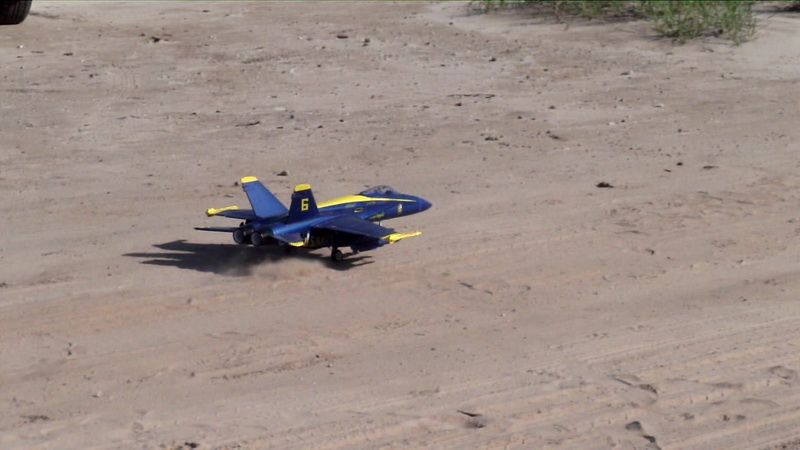
What i like about the FMS F-18 HORNET?
Its obvious if you browse around my video on my Youtube Channel or any of my social media updates mostly always features me enjoying my FMS F-18 HORNET than other EDF planes in my collection. Its a jet that is 'Jack of all trade'. Fun and i always come back for more!
Below are list of those factor which described my reasoning as my 'go to' daily plane:
- Small & portable
With just 960mm length, 675mmmm wingspan and full flying weight of approximately 850gram this plane is a 'park flyer' size category model. Being small its very portable, fits on the front seat passenger car and easily tucked under a single arm while walking around. Sometime i would bring it over to my work place in the office and sit beside my work table. Good size for shelf queen display too. - Aerobatics
With adequate amount of thrust through upgraded BLACK TORNADO KV4800 brushless motor the flight control on this F-18 is extremely responsive. It able to pull any types of basic aerobatics maneuver from barrel roll, big loops, inverted flights and some high vertical thrust flight at G-force without putting stress on its fuselage. On contrary, happened incident in the past where my HK A-10 WARTHOG snapped its wing spar performing similar maneuvers. - All weather
Heavy winds, cross winds, head winds, turbulence or even in unpredictable stormy weather this plane can handle it all without feeling you're handling a rocked ship on wavy sea. Its aerodynamic fuselage, good inertial mass momentum to go forward and hefty amount of thrust via motor upgrades made it able to to fly straight without being rocked around or bumped by gusty wind. This is also true when performed take-off and also on tight space landing...it handled like a boss!
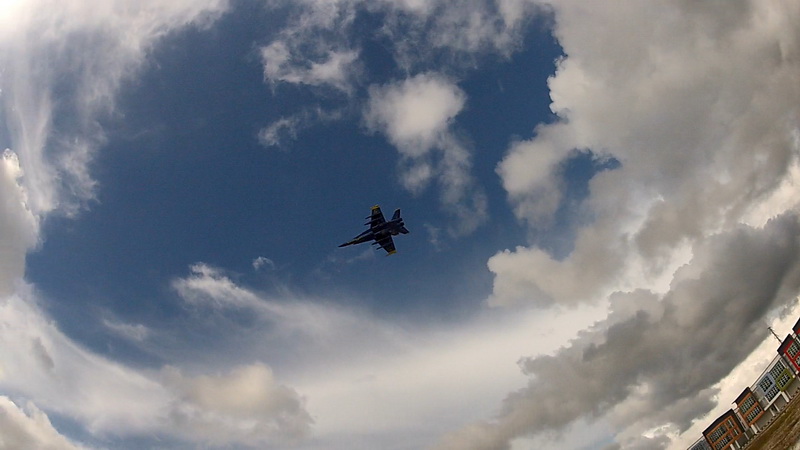
Videos/Medias![]() Here are sample of video of i posted on my Youtube channel contain fun flying my FMS F-18 Hornet 64mm EDF jet - 710mm
Here are sample of video of i posted on my Youtube channel contain fun flying my FMS F-18 Hornet 64mm EDF jet - 710mm
- Product gallery (mixed with my other planes): HOBBY KING AXN Cloud Fly floater jet glider - 1290mm
- Video: FMS F-18 Hornet EDF Blue Angels jet - Dusty Day II
- Video: FMS F-18 Hornet EDF Blue Angels jet - Low Tide Aerobatics
- Video: FMS F-18 Hornet EDF Blue Angels jet - Head Wind Aerobatics
- Video: Full thrust aerobatics - FMS F-18 Hornet EDF jet in action
- Video: FMS F-18 Hornet - Backyard bypass
- Video: FMS F-18 Hornet - Beach screamer!
- Video: ART-TECH vs FMS F-18 Hornet EDF jet on windy days.
- Video: FMS F-18 Hornet 64mm - Maiden flight
Vendor/seller
Here are list of reputable vendor/seller which i bought from and also verified by community forum discussion groups. Also i've experienced buying from these places that have good support and services:
- Seller FMSmodel.com: 64mm F-18 Vigilantes Grey V2 PNP *(Grey color livery)
- Seller HorizonHobby.com: F-18 V2 Gray 64mm EDF Jet PNP *(Grey color livery)
- Seller HorizonHobby.com: F-18 Blue Angels V2 PNP, 64mm EDF Jet with Free AR410 Receiver *(discontinued production model)
Support group/articles:
Places where you can find help and resources related to this product:
- RCgroups discussion group -
- RCgroups discussion group - FMS F-18 64mm EDF EPO/EPS Version2/Version1 thread: https://www.rcgroups.com/forums/showthread.php?2587113-FMS-F-18-64mm-EDF-EPO-EPS-Version2-Version1
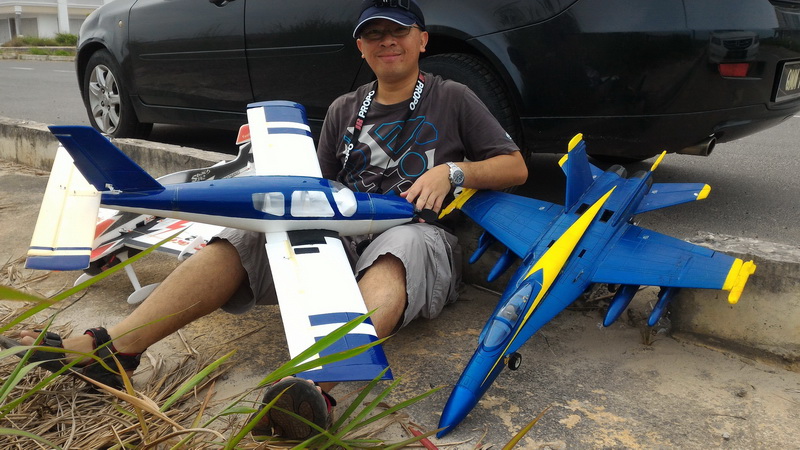
Summary
My days with flying the FMS F-18 HORNET (V1) has always been spectacular and had proud moments, it makes me proud to become an R/C 'jet' pilot even though its just a small sized park flier jet.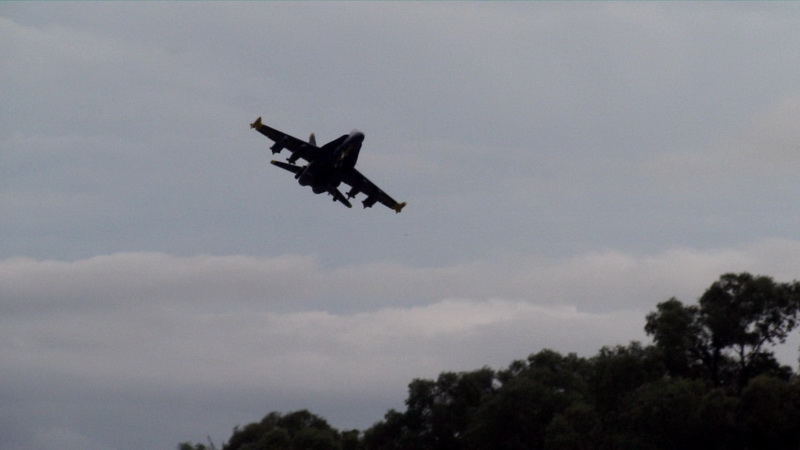 Regards les its size and budget its still a wonderful 'all can do' jet plane that gains its true flying character through your own R/C piloting skill.....under my belt its a spectacular flight to see and behold (Excuse my ego moments, lol!) as it flew against the beautiful backdrop of tropical blue horizon. It has always been fun and adventurous moment with this plane where i've travel many places and unknown just to keep it flying, a jet that keep me excuse going outdoor and see what i'll get for the day. I can push its flying capability beyond its boundary with flips and stuns in the air regardless how bad the weather goes and still i always get it back in one piece landing it in style. It looks elegant and stylish both in the air and when landing on the ground its just like watching an a real life F-18 Hornet on TV screen but you're actually controlling it. My best proud moments has always been doing full vertical thrust and then fall back into a back flip or going into a big loop in the air while hearing loud air intake of an EDF screaming loudly gasping for air before it cut into silence and glide back into leveled with the horizon...."Oh wow! that's a rocket right there!"
Regards les its size and budget its still a wonderful 'all can do' jet plane that gains its true flying character through your own R/C piloting skill.....under my belt its a spectacular flight to see and behold (Excuse my ego moments, lol!) as it flew against the beautiful backdrop of tropical blue horizon. It has always been fun and adventurous moment with this plane where i've travel many places and unknown just to keep it flying, a jet that keep me excuse going outdoor and see what i'll get for the day. I can push its flying capability beyond its boundary with flips and stuns in the air regardless how bad the weather goes and still i always get it back in one piece landing it in style. It looks elegant and stylish both in the air and when landing on the ground its just like watching an a real life F-18 Hornet on TV screen but you're actually controlling it. My best proud moments has always been doing full vertical thrust and then fall back into a back flip or going into a big loop in the air while hearing loud air intake of an EDF screaming loudly gasping for air before it cut into silence and glide back into leveled with the horizon...."Oh wow! that's a rocket right there!" 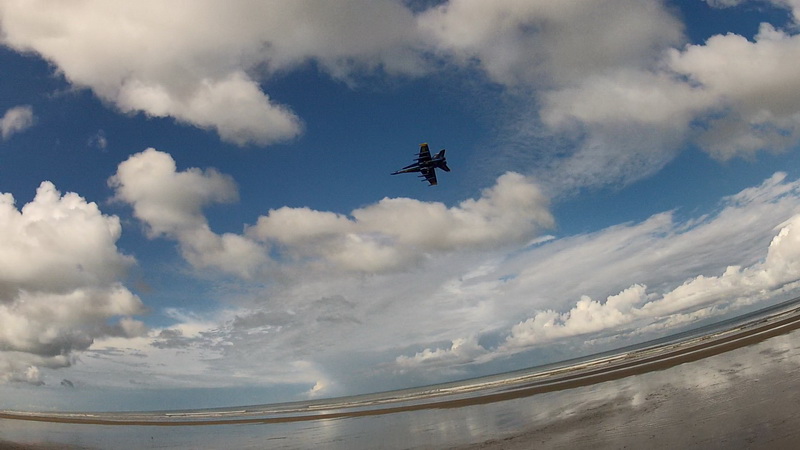 Every weekend and evening both my FMS F-18 HORNET and the HOBBY KING A-10 WARTHOG have been always the best companion for R/C flying activities...both are 'Air Ninjas!', lol! Among all my EDF jets on my collection this one never disappoints me, keeps me proud and held my nose high..hahaha!
Every weekend and evening both my FMS F-18 HORNET and the HOBBY KING A-10 WARTHOG have been always the best companion for R/C flying activities...both are 'Air Ninjas!', lol! Among all my EDF jets on my collection this one never disappoints me, keeps me proud and held my nose high..hahaha!
After many years of flight and bashes the 64mm EDF - FMS F/A-18 HORNET still living strong to this day; no major scars or serious damages. Just nicks from my finger nails and cracks on the wing tip rockets due to hand handling in and out of my car back seat during transporting. Daily it continue to scream the skies along side my trusty Hobby King A-10 Warthog and Hobby King Pitts Special every day all of share the same 3s 2200mah 35~40C li-po battery packs....all of the are my favorite 'Air Ninjas' flipping and spins in the air. Fast, fun, versatile, robust, convenient and also being portable at the back of my car seat its my daily jet that keeps me smiling and excited before and after flying session all the way to bedtime knowing i did something cool in the air that very day.
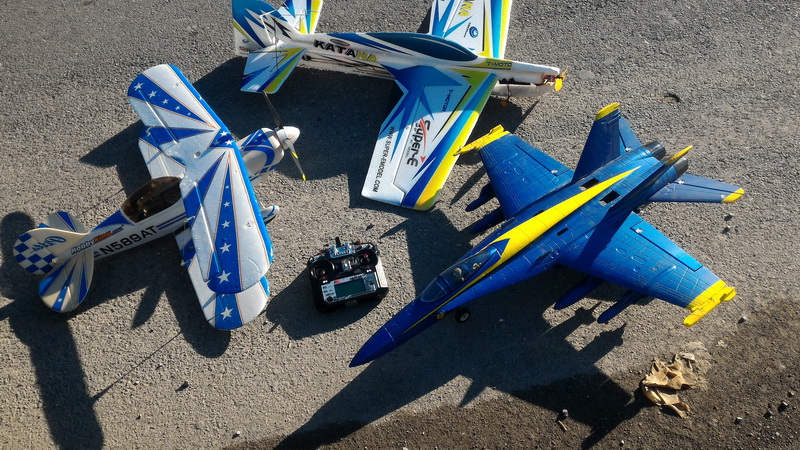
As for the model availability this 64mm EDF - FMS F/A-18 HORNET model are still around in the market which can be purchase online. 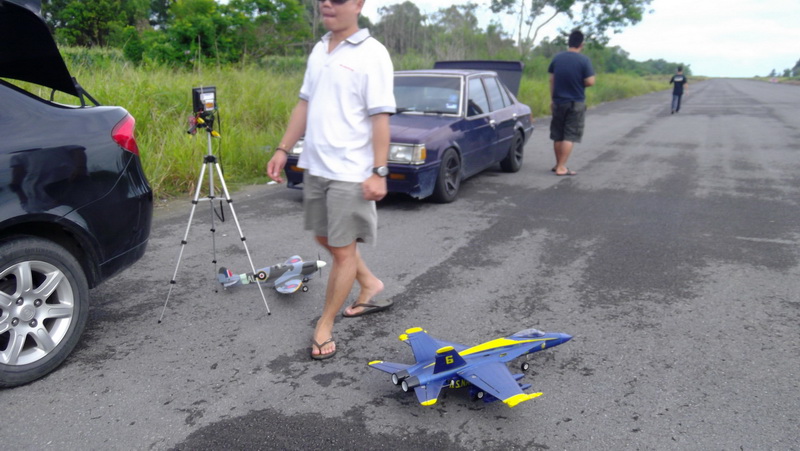 However in 2022 its rare to find the 'Blue Angel' livery under FMS model. Fortunately you can get the exact model of 'Blue Angel' livery under rebranded model from 'FORCE RC' brand which can be found on any famous online R/C shops like on Horizon Hobby website and etc. Overall both flight characteristic, battery and CG placement are exactly the same if they still uses 3s 2200mah 35~40C lipo battery except for 'Version 2' model where CG and weight are different. There are owners and communities have opened a discussion groups for this models for those who love to share their experience and technical support at Rcgroups.com forum via this link:
However in 2022 its rare to find the 'Blue Angel' livery under FMS model. Fortunately you can get the exact model of 'Blue Angel' livery under rebranded model from 'FORCE RC' brand which can be found on any famous online R/C shops like on Horizon Hobby website and etc. Overall both flight characteristic, battery and CG placement are exactly the same if they still uses 3s 2200mah 35~40C lipo battery except for 'Version 2' model where CG and weight are different. There are owners and communities have opened a discussion groups for this models for those who love to share their experience and technical support at Rcgroups.com forum via this link:
